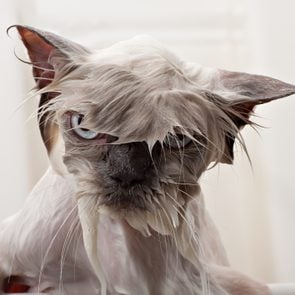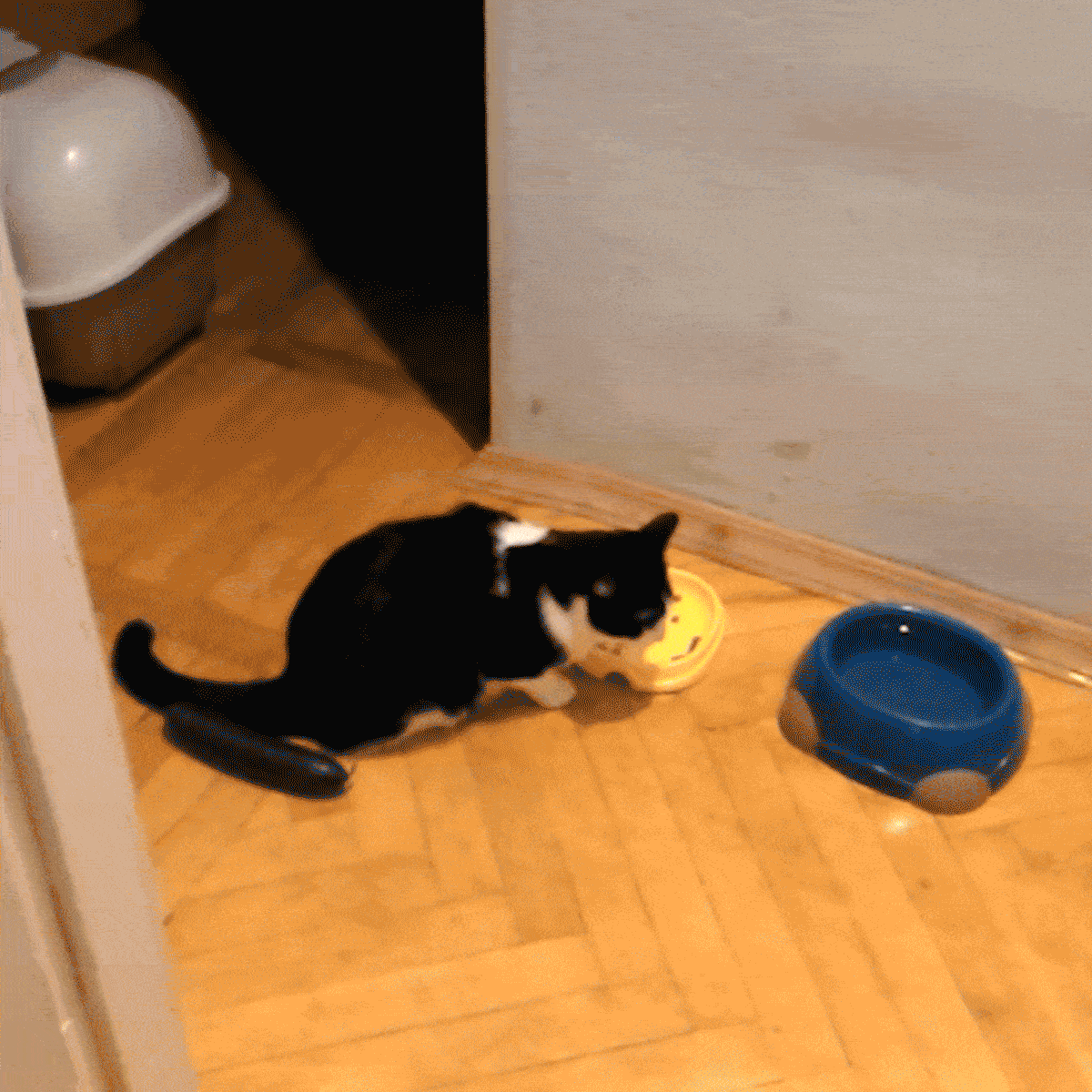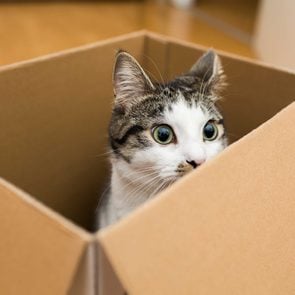Why Do Cats Loaf?
Updated: Apr. 17, 2023

Does your cat look like a loaf of bread when he sits? The reasons for that all-tucked-in pose may surprise you.
Pretty much no one on earth would argue this point: Cats can be quirky. They pretend to knead biscuits on the couch, chirp at birds outside the window and randomly spring out of a deep sleep to zoom down the hall at 2 a.m. Hilarious memes of cats abound on things exactly like this.
Cat owners can spend years of their lives trying to decode their pet’s body language and the mysteries of cat behavior. But one of their most entertaining quirks happens when they’re doing nothing at all: The loaf. So why do cats loaf, exactly? We asked pet experts to fill us in.
Get Reader’s Digest’s Read Up newsletter for more pet insights, humor, cleaning, travel and fun facts all week long.
What is a cat loaf?
If you’re not familiar with the term, cat loafing is when kitties tuck themselves into a rectangular shape with their paws beneath them and their tail wrapped around themselves. “People call it loafing because they look like a loaf of bread or a meatloaf,” says Leslie Sinn, DVM, a veterinarian at Behavior Solutions in Ashburn, Virginia, and a diplomate with the American College of Veterinary Behaviorists. “It’s very descriptive.”
But there can also be variations on the loaf theme. Sometimes cats will keep their elbows out or their tail unfurled in a kind of partial loaf. “It might depend on what they’re laying on,” says Marielle Penyy, DVM, a veterinarian with The Cat Doctor in New Hyde Park, New York. Or like a person shifts position when they’re sitting, your cat may just move one foot out if there’s too much pressure on one part of their body.
Why do cats loaf?
Cats seem to have a number of reasons for settling into the loaf position—most of them good. “Loafing just seems like it’s a pretty comfy position for them,” says Dr. Sinn. Cats’ body language can communicate without words, and here’s what cat loafing may mean.
They’re happy and comfortable
Which is exactly what you want for your fuzzy friend. “They’re literally kind of plopped over their feet and chilling,” says Dr. Sinn. “And they tend to do that when they’re relatively relaxed and settling down into a snooze.” If their loaf is accompanied by slow blinks, purrs and other signs your cat is happy, you can be sure that all is good with your favorite furball.
They’re trying to stay warm
Even with a fur coat, your kitty can get chilly. “There’s some speculation that loafing helps them conserve body heat,” says Dr. Sinn. “Like when you’re out walking in the cold and you tuck your hands into the sleeves of your jacket.” This is why you’re more likely to find your cat loafing in the winter than in summer. “In general, you see that kind of tucked-in body posture associated with cooler temperatures,” says Dr. Sinn.
They’re ready for anything
While your cat may sometimes close his eyes while loafing, rest assured he knows exactly where you are in the room. (You may even notice him tracking you with his half-closed eyes.) “When cats are truly asleep, they curl up on their side. So the loaf position isn’t really a restful one,” says Dr. Penyy. “It’s one where they watch their surroundings and are ready to leap at a moment’s notice.” Cats are both hunters and prey, so being in the loaf position makes it easier for them to pounce quickly.
They’re sick or in pain
This is the loaf sign you’d probably rather not hear. Although the loaf position is generally a sign your cat is comfortable, sometimes what looks like a loaf is really a cat trying to hide the fact that something is wrong. If you suspect that your cat is sick or injured, that’s when the loaf signal means it’s time to consult your vet. “Cats frequently do a hunched position when they’re in pain,” says Dr. Penyy. She explains that the loaf pose can relieve stress in your cat’s lower back or help relieve abdominal pain.
What do the different types of cat loafs mean?
Since you’re schooling yourself on this hot topic, you should definitely learn more about the different loafing styles. Some kitties like to keep their tail unfurled. Others will keep one paw tucked and one half-tucked—as if they might need to swat at something (or someone) walking by. Die-hard cat lovers have noted all the variations.
The full loaf
This is the classic and most common pose: The cat will have his head up, all four paws neatly tucked under himself and his tail wrapped tightly around its body. Your kitty may be doing this for any of the reasons mentioned above. Here’s what else your cat’s tail can reveal.
The partial loaf
In this version, the cat will have his front paws visible. Some cats like to keep their elbows jutting out to the side. Others will sit with their paws extended forward, like the famous Egyptian Sphinx. There’s probably no particular reason for either; they may just be more comfortable that way.
The face-plant loaf
Why do cats loaf this way? No one seems quite sure why some cats like to sleep with their face planted into the surface in front of them. Maybe it helps them stay warm? Maybe it’s a sign they don’t want to be disturbed while they nap? But it’s definitely a sign the cat is relaxed.
Should you be concerned if your cat loafs?
For the most part, no. It’s a sign that your cat is happy and comfortable. “It’s just your cat being a cat,” says Dr. Penyy. But do always pay close attention to your cat’s body language to make sure they aren’t trying to hide anything. “In a true bread-loaf position, the cat is pretty relaxed,” says Dr. Sinn. “There’s no evidence of tenseness or rigidity.” If you see an arch in their back and a stiffness to their body, that might indicate a cat is uncomfortable or is having medical issues. Some other signs you should call your vet: muscle tremors, skin rippling, panting, pinned ears or dilated pupils.
What should you do the next time your cat is loafing?
Smile, and savor the moment. “Generally you should feel pretty complimented,” says Dr. Sinn. “If they’re able to settle in that classic bread-loaf position and just relax, the best thing to do is just enjoy looking at them.”
Sources:
- Leslie Sinn, DVM, veterinarian at Behavior Solutions in Ashburn, Virginia, and a diplomate with the American College of Veterinary Behaviorists
- Marielle Penyy, DVM, veterinarian at The Cat Doctor in New Hyde Park, New York




















